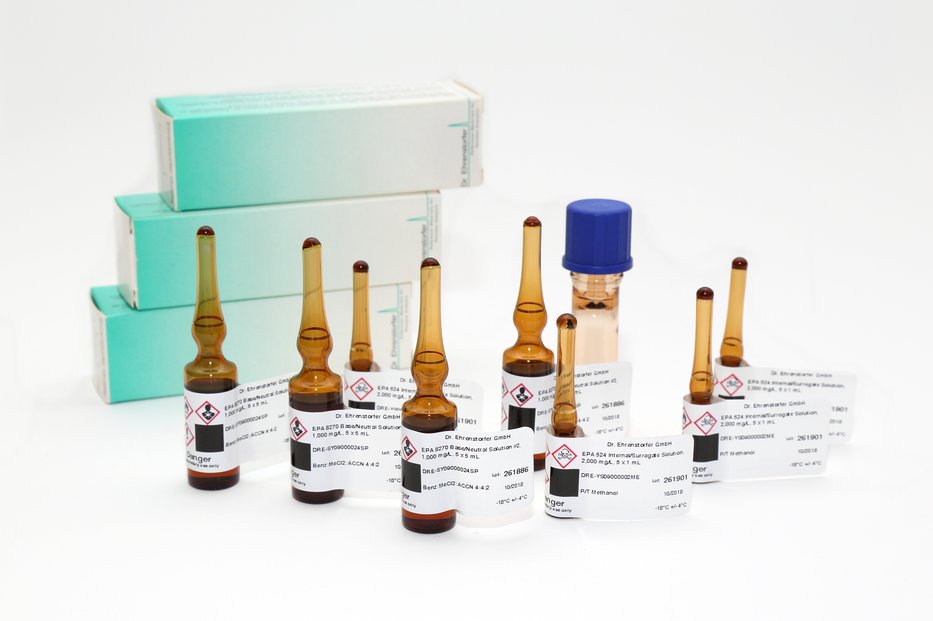Specifications:
| Application | Biochemistry | ||
| Storage Temperature | -20°C | ||
| Product Type | isotopes | Forms | Powder |
| Product Brand | LGC Standards | ||
| Product Grade | Analytical grade | Formula | C₃₅H₆₂D₅ClO₄ |
1,3-Dipalmitoyl-2-chloropropanediol-d5 is a chemically synthesized, deuterium-labeled compound, primarily used in biochemical and pharmacological research. This molecule features two palmitoyl chains attached to a chlorinated glycerol backbone, with five hydrogen atoms replaced by deuterium. Its labeled nature makes it valuable in mass spectrometry and isotope tracing studies.
Chemical Properties
| Property | Details |
|---|---|
| Chemical Name | 1,3-Dipalmitoyl-2-chloropropanediol-d5 |
| Molecular Formula | C35H67ClD5O4 |
| Molecular Weight | ~605.43 g/mol |
| Structure | Two palmitic acid chains (C16) esterified to positions 1 and 3 of the glycerol backbone, with a chlorine atom attached to position 2. |
| Isotopic Labeling | Deuterium (d5) at key positions on the molecule. |
| CAS Number | 1426395-62-1
|
Applications
- Stable Isotope Labeling:
- Used as an internal standard for quantitative analysis in mass spectrometry due to its isotopic labeling.
- Supports lipidomics studies, including glycerolipid and glycerophospholipid metabolism.
- Biochemical Studies:
- Investigates enzymatic activities involving chlorinated glycerolipids.
- Helps elucidate the mechanisms of lipid transport, metabolism, and signaling pathways.
- Pharmacological Research:
- Evaluates chlorinated lipids' interactions with biological membranes and proteins.
- Explores potential roles in disease states, such as inflammatory and metabolic disorders.
- Analytical Chemistry:
- Enhances accuracy in chromatography and mass spectrometry workflows.
- Useful in isotope dilution assays for quantifying lipids in biological samples.
Key Features
- Deuterium Labeling:
- Five deuterium atoms provide distinct mass spectral peaks, facilitating precise tracking and quantification in complex mixtures.
- High Purity:
- Synthesized to meet stringent purity standards, ensuring reliability in experimental applications.
- Lipid-Like Structure:
- Mimics native lipid behavior, enabling realistic biological modeling and interactions.
Physical Properties
| Property | Details |
|---|---|
| Appearance | White to off-white powder or solid. |
| Solubility | Soluble in organic solvents like chloroform, methanol, and ethanol. |
| Storage Conditions | Store at -20°C in a dry, dark environment. Protect from moisture and air exposure. |
| Stability | Stable under recommended storage conditions. Avoid prolonged exposure to high temperatures or strong acids/bases. |
Handling and Safety
- Safety Precautions:
- Handle in a well-ventilated area while wearing appropriate personal protective equipment (PPE), including gloves and goggles.
- Avoid inhalation, ingestion, and skin or eye contact.
- Hazard Classification:
- Chlorinated compounds may exhibit reactivity; consult the Safety Data Sheet (SDS) for detailed information.
- Ensure proper waste disposal per local and institutional regulations.
Applications in Research
- Lipidomics:
- Investigating lipid modifications, including chlorinated derivatives, in cellular and tissue samples.
- Disease Studies:
- Examining lipid biomarkers in conditions like atherosclerosis, inflammation, and oxidative stress.
- Drug Development:
- Exploring potential therapeutic or adverse effects of chlorinated lipids in pharmacokinetics and pharmacodynamics.
1,3-Dipalmitoyl-2-chloropropanediol-d5 (D486842) is a versatile and valuable tool in lipid research, isotope labeling, and analytical applications. Its combination of isotopic labeling, lipid-like behavior, and biochemical relevance makes it an essential compound for advancing studies in lipidomics, metabolism, and pharmacology.




 0
0
